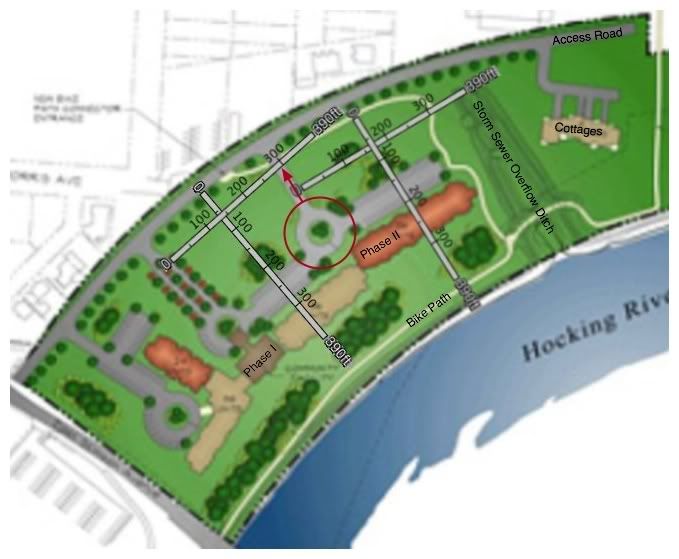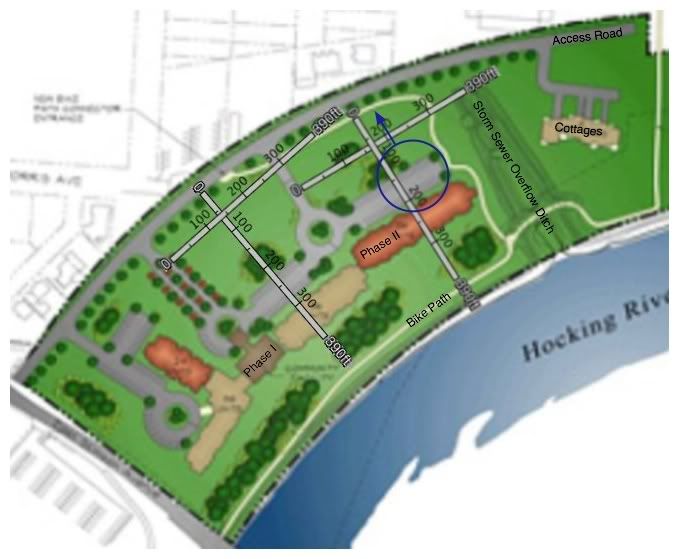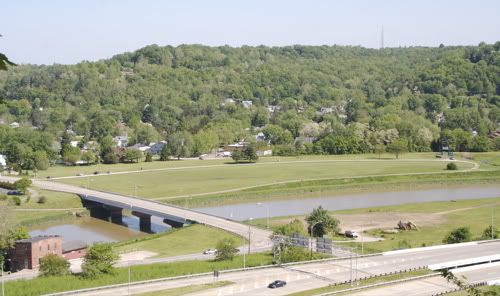
After a busy spell at work and a glorious week and a half away on vacation, I’m back in the saddle again. It looks like I missed another bomb scare, and...well look at that, they finally tore down the old Bob’s IGA!
Pardon my odd sense of newsworthiness, but this is what I write about, y’all.
The demolition of Bob’s was a foregone conclusion dating from at least a year ago. Still, it prompts me to examine the events surrounding the close of Bob Sowers’ self-titled supermarket on Stimson and Kern, because they say a lot about where Athens, and America as a whole, has been headed.
Sowers’ local chain of three supermarkets
folded in December of 2004 due to financial insolvency. Sowers blamed the arrival of Wal-Mart on the grocery scene for the closing, while local rumor countered that he had overextended himself by opening a new store in the Plains at a time when belt-tightening was in order for smaller supermarkets. It seems like both factors contributed, but the debate that emerged in the wake of the closing centered on the relative value of Bob’s uptown location versus Wal-Mart’s lower prices.

A particularly fascinating
letter from recent Athens mayoral candidate Ed Baum followed a public exchange by
J. Miles Layton and
Marshall Lilly. Baum argued convincingly that the closing of Bob’s was another chapter in a national trend to consolidate retail business that began in the 1960s, and that supermarkets the size of the A&P (Bob’s original chain affiliation) put two dozen small neighborhood groceries from an earlier era out of business.
While Baum expressed contentment or at least acceptance of this trend towards distant, isolated shopping districts with megastores, I remain skeptical. The savings for the large retailer are obvious: ship in bulk to a single location and let customers from miles around do the driving. The oft-reported savings to the consumer are less clear, and to see why, I’ll spend a moment playing with one of the Attention-Getting Device’s favorite toys: the story problem.
Let’s begin by assuming that a fictional Mr. E. lives on Maplewood Drive, in the middle of the near east side neighborhood of Athens. Mr. E. is a half mile from Bob’s, a ten-minute walk or two-minute drive. By contrast, Mr. E. lives 1.8 miles from Wal-Mart. It’s a ten-minute drive and walking is out of the question.
How much does it cost Mr. E to travel this extra distance? If he shops twice a week, once to stock up and once to replenish a few perishables or items he forgot, he travels 5 extra miles a week to Wal-Mart, and all of those miles are traveled in his car.
At the
current IRS mileage rate of 58 cents a mile, which counts fuel cost and wear and tear on the vehicle, Mr. E spends .58¢x5x52 = $150 extra dollars a year in transport to shop at Wal-Mart instead of Bob’s. He also spends an extra 20 minutes of his week behind the wheel in heavy traffic. If time is actually money, and Mr. E’s time is worth $10 an hour, his trips cost him an additional $173 yearly. If he used to head to Bob’s on foot when he needed a couple of items, he loses the health benefits of walking a mile a week carrying a few pounds of groceries, though he may make up half that distance getting from the Wal-Mart parking lot to the shelves and back! He spends more time per year keeping his car maintained as well. Assuming the average American eats 1500 lbs. of food a year, Mr. E. won’t break even shopping at Wal-Mart unless he saves 10-20 cents on the price of every pound of food he buys there instead of Bob’s.
Keep in mind that Mr. E, like most TAGD constructs, represents a best-case scenario. Residents living in the Mill St., Northside, Uptown and near West Side neighborhoods all sacrifice more time and money shopping out on the strip because they live roughly the same distance away from Bob’s location but further away from East State Street. People living west and south of Athens that work in the city have lost a chance to include a shopping trip in their daily commuting route. In fact, the only clear winners travel-wise are people living directly off E. State or Route 50 in eastern Athens County.
Finally, the supposed convenience of “one-stop shopping” is largely a myth, as anyone who has wandered in confusion through the depths of a modern department store already realizes in their gut. The 11-acre area that the Wal-Mart building and its parking lot covers is equal to the stretch of Stimson that used to be home to not only a supermarket, but a hardware store, natural foods store, thrift shop, a dry cleaner and two coin laundries, bank, post office, liquor store, bowling alley, gas station, law offices, two auto-repair shops, a bike shop, a restaurant and a pizzeria. Many of these businesses are still there, but in the past 8 years many have closed down or moved, leaving vacant storefronts or niche businesses that no longer cater to basic needs: a luxury car dealership, specialty truck accessories, a convenience store that stocks cheap beer at high prices, a sex shop. It is especially ironic that Bob’s is set to be replaced with, you guessed it, a parking lot.

The case I have just made is not an attempt bash Wal-Mart specifically but rather to highlight the hidden costs in the entire model of strip mall shopping that has been advancing since the 1960s. An infrastructure that forces individuals to drive everywhere they need to go is senseless, inefficient, and if global climate change is linked to traffic pollution, extremely dangerous in the long term. The fact that shoppers elsewhere have learned to swallow travel times of over an hour round trip for their groceries is no excuse for us to keep moving in that direction. The Athens I know and love is a visionary place, a place where people think for themselves and make their own rules.
A smarter model for the new millennium might look like this: Athens with a distributed network of eight to ten neighborhood grocery stores whose owners have hammered out a collective agreement with a few large distributors so that distributor, retailer and consumer still enjoy the price savings of bulk shipping, but shoppers have easy access without having to jump in their cars and battle the entire rest of the populace for an aisle and parking space. Imagine a grocery right down the street, where you knew the owner and employees but could still take advantage of those almighty low prices. Now
that would be a weekly special.












